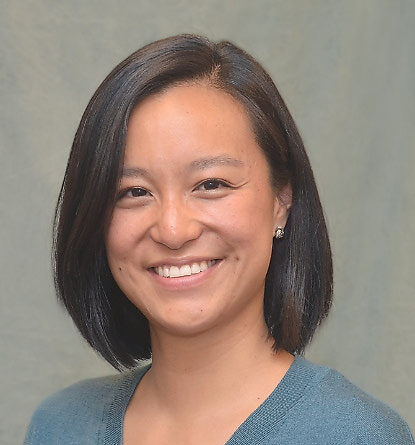Voice is a projection of one’s self-identity. Understanding how it ages can help individuals protect and cope with its changes later in life.

A changing voice is a natural sign of growing up. Just ask any parent of a teenager, and they will tell you about the discomfort and confusion felt by their child growing into their new voice.
While some may never have to worry about their voice changing again, certain individuals may relive similar feelings much later in life. According to Carolyn Hsu, MS, CCC-SLP, senior speech-language pathologist at Mass Eye and Ear, about one-in-five individuals over 65 will develop an age-related voice disorder.
These disorders often affect quality of life, especially among an elderly cohort already prone to social isolation and depression. Voice, after all, plays a major role in shaping personal identity. An individual who cannot adequately project their identity to the world might feel more disconnected than they ever had before.
“You might choose not to go out to dinner with a friend out of fear they won’t hear or understand you, or you might pull back from a conversation with a family member you otherwise might have enjoyed,” said Carolyn. “It doesn’t have to be that way. These individuals need to know they are not helpless.”
Plenty of avenues exist for combatting a hoarse, aging voice, Carolyn told Focus. Choosing the right one, however, begins with understanding what makes a voice unique in the first place.
What, exactly, is voice?
People often mistake voice with speech. Both seem interchangeable, but they are not the same; one relies almost entirely on the other.
“When we’re referring to voice, we’re strictly referring to the ‘ah’ sound we make, or the quality of the sound we’re producing in our throats,” Carolyn explained. “Speech refers to how we use the muscles around our mouth and throat to shape those sounds into coherent words and conversations.”
The sound we recognize as a person’s voice begins in the vocal folds. These folds are horizontal flaps of tissue that sit in the throat, behind the Adam’s apple, forming the shape of a “V.” The folds open and close, allowing air to easily pass in and out of the lungs. When a person exhales, air rushes up the lungs, into the throat and through the vocal folds. If the vocal folds lightly close during an exhale, the sustained air flow causes the folds to vibrate against each other, almost like the open end of an inflated party balloon. The vibrations produce sound waves that pass upward through the vocal tract and out the mouth.
Movements made by the tongue, lips, throat and mouth afford individuals a seemingly limitless range of complex words from these sound vibrations. The sentences crafted from these words culminate in the conversations essential for day-to-day activities. But, unlike voice changes, speech does not typically change with age. According to Carolyn, those who experience sudden changes in their speech should immediately assess for symptoms associated with a stroke and visit an Emergency Department as needed. Those with gradual changes in speech intelligibility should seek medical workup to rule out other serious conditions related to the throat, head and neck region.
How does the voice change over time?
Like any muscle in the body, vocal folds are vulnerable to the normal wear-and-tear of overuse and aging. A younger individual will normally present with plump folds, leaving little gap between the two when they close together. Over time, these folds may lose bulk and elasticity, resulting in a gap when the folds close. A wider gap can inhibit the vibrations between the folds, thereby producing an unfamiliar sound or making it harder to speak, altogether.
Several other factors can contribute to a labored, hoarse voice later in life. Tired or weakened respiratory muscles might not produce the same amount of force needed to push air up from the lungs as they had years prior. A slowed nervous system, reduced blood flow to tissue and less saliva production tend to occur in individuals who are older, too, all of which can impact the health of the vocal folds.
Carolyn also made note of a correlation between the age at which individuals retire and the age at which many begin to experience changes in their voice. These individuals, she posited, might suddenly stop using their voices as frequently as they had before their retirement, leading to a similarly weakened voice.
“If you stop going to the gym after lifting weights several days of the week, there’s a good chance your arms will lose their tone, and you’ll need to recondition those muscles before immediately trying to lift the same amount of weight again,” she said. “If you stop using your voice, there’s a good chance your vocal folds will lose the tone and size that produced the voice you had come to know most your life.”
What treatments can help?
Individuals who are older and live alone—or simply interact with fewer people than most—can practice techniques to keep their vocal folds active and healthy, even from the comfort of their own home.
During the COVID-19 pandemic, some clinicians urged patients to schedule lengthy phone calls with a friend or family member, or to simply pick up a conversation with a friendly face in public, such as a cashier at the grocery store. Others urged patients to drink plenty of water throughout the day to keep their vocal folds hydrated.
For any patient experiencing a hoarse or weakened voice, Carolyn recommends seeing a comprehensive ear, nose and throat surgeon or a laryngologist if symptoms persist for more than a few weeks. These specialists can evaluate the throat and vocal folds and rule out any concerning abnormalities. Patients with fatigued or aged vocal folds may benefit from voice therapy with a speech-language pathologist. They may also undergo injection augmentation, an out-patient procedure during which a laryngologist increases the bulk of the vocal folds to promote better vocal fold closure.
During voice therapy, a speech-language pathologist can teach patients exercises and therapeutic techniques to relieve discomfort from speaking, improve vocal quality or strengthen muscles used in respiration and voicing. Those who go too long without seeking care, or attempt to teach themselves techniques found online or on social media without the supervision of a trained specialist, run the risk of developing a compensatory strain, muscle hyperfunction or muscle tension.
“At Mass Eye and Ear, we always want to empower our patients,” said Carolyn. “We want to assure them that—with a little patience, time and commitment to the exercises—they will begin to notice improvements.”





My voice has changed a lot in the past couple of years. I used to sing, and had a high, sweet voice. No longer. It cracks. 🙁
I’ve recently moved to a retirement community and no longer drive. I would love to have physical therapy for my voice.
Is it possible to have remote visits?
Thank you.
Ellie Miller,
In the past few years my voice has gone from sweet to scratchy.
Is it possible to do therapy remotely? I’ve recently moved to a retirement community and I don’t drive.
Thank you.
Ellie Miller